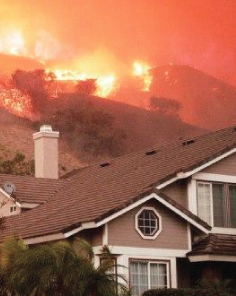Very interesting finding from Headwaters Economics – the Firewise program is effective at what it was designed to do (increase safety), but is not associated with lower suppression costs. Read the full brief on the Headwaters Economics website.
The Firewise Communities/USA® Recognition Program often is mentioned as a potential remedy. However, Firewise focuses on increasing safety and was not designed to lower suppression costs.
…
The costs of fighting wildfires has become a major policy issue in the United States, and there is general agreement that both the area burned by wildfires and the frequency of large fires, often termed “mega-fires,” will increase in coming decades.
As a result, policy makers, land owners, and wildfire managers are seeking viable solutions to reduce wildfire risks and costs. One often-talked about remedy is the voluntary Firewise Program. Such efforts—focusing largely on reducing fuels and making structures safer from fires—can provide a safer environment for firefighters and enable more structures to be saved.
The Firewise Program was not designed to lower suppression costs, and our research finds no evidence of a relationship between wildfire suppression costs and Firewise participation.
The lack of evidence that Firewise reduces suppression costs suggests that policy makers attempting to address increasing wildfire suppression costs are better served focusing on other solutions, such as shifting costs to the local jurisdictions and property owners incurring wildfire liabilities and limiting future development in fire-prone landscapes.
The challenges of wildfire suppression are two-fold and necessitate different approaches for addressing issues in built environments compared to where no development yet exists. In wildfire-prone areas with built homes, suppression resources and mitigation efforts, including the Firewise Program, are critical for protecting people and property.
However, because the vast majority of private land in the western WUI is not yet developed (84%), solutions are needed to address the potential for expanded development and associated wildfire risk. For now, it appears that the Firewise Program is not a solution for reining in suppression costs when wildfires threaten communities.
